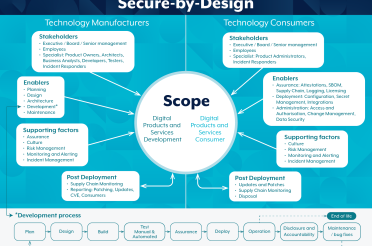In my last article, I spoke about the need to leverage new technology for seizing new opportunities while also minimizing the unnecessary complexity of managing infrastructure and networks. This is where we’re seeing the relationship between organisations and IT vendors beginning to shift, as more organisations are seeking a more hands-on partnership with IT providers.
As we switch to XaaS (Everything as a Service) and the increasing uptake of MSPs (Managed Service Providers), some elements of the old models of tech consumption have still yet to change in the way they need to. This is about the way we measure the value of IT services, and how IT vendors are still dictating the terms of their engagements. They paint benefits for themselves as benefits for their clients, and many organisations are far too willing to accept this as just the way things are.
I believe that an IT vendor or provider should be seen as a trusted business partner and even an extension of your company. However, all too often we see that IT vendors haven’t been living up to that promise. So, how do we change our outlook on what is and isn’t providing value?
No news is good news
We’ve all dealt with an IT help desk that is, to a varying degree, not as responsive as we’d like. This can lead to frustration when technology challenges impede our ability to get things done. Because of this, many organisations tend to believe that responsiveness is a key criteria for judging the value that an outsourced IT team provides. If someone is always there to quickly solve problems and put out fires, we think we’re getting great value for money.
But what if there were less problems occurring in the first place? What if you could reduce the number of helpdesk requests by up to 80%? This is where a real partnership with IT vendors means they’ve proactively taken measure with your IT systems and your network to ensure these problems aren’t occurring in the first place. Value in this case is measured by the lengths they’ll go to in order to ensure your entire IT environment and network is properly configured for your needs.
An eye to the future
Another area where IT vendors tend to over inflate their value is in the short term benefits they provide such as lower costs, reduced work for your IT team, and new functionality. But few contracts have any specific agreements around future innovation and the creation of new value driving activities.
McKinsey examined more than 200 IT contracts with managed service providers in 2017, and they found that 90% of contracts were not designed to provide mutually beneficial outcomes – with a heavy focus on short term initiatives, and little to no agreement on joint innovation initiatives into the future.
To unlock long-term vision and innovation, organisations should be clear that certain service requirements are expected at the outset, but those service requirements should be refined and co developed with IT providers through regular innovation events and meetings that are aimed at surfacing new ideas and determining the services required to act on them.
Ultimately, organisations need to find the right partner who is willing to provide them with the type of long range vision that will truly provide value. Beyond cutting costs and complexity from outsourcing IT, organisations need to examine how they are leveraging partners to innovate for creating a competitive advantage.
About the author
As the Managing Director of Aryon, my team and I are here to reduce the complexity for organisations who want to take advantage of next-generation networks, infrastructure and workforce technology. If you would like to discuss how your organisation can take advantage of new digital networks, infrastructure and technology without the added stress, please feel free to get in touch with me at dean.bartlett@116.90.41.25.








